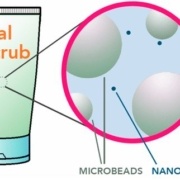What’s the deal with the Plastic Soup again?
March 15 2024 That’s what readers of news site nu.nl on their comment platform Nujij were wondering. In a recent […]
Since the massive introduction of plastic after the Second World War, 8.3 billion tons of plastic has been produced. Of this, 6.3 billion tons ended up as waste. Of this waste plastic, only 9% is recycled and 12% incinerated. The remaining 79% has ended up in dumps or in the environment. The worldwide plastic production rose from 2 million tons in 1950 to over 400 million tons in 2015. About half of this was produced only in the last 13 years. If the current trend continues, by 2050 there will be an estimated 12 billion tons of plastic in dumps and in the environment. This is the first time that an estimate has been made of the world-wide production of plastic and what happens to it. The American research appeared in the journal Science Advances.
None of the plastics that are produced at large scale degrade in the environment. Of the 9% that is recycled, only 10% was made from previously recycled plastic. Recycling may lengthen the time it takes for the plastic to enter the environment, but it does not prevent it. Recycling is thus not a real solution for reducing the plastic soup.
Read more about this in our What to do with plastic waste? folder.
March 15 2024 That’s what readers of news site nu.nl on their comment platform Nujij were wondering. In a recent […]
The first Impact Fair is Europe’s largest Impact Experience. An interactive ‘immersive’ experience of impactful examples.
The waste-export to countries outside of the EU has been restricted The Netherlands is against a carpet ban on shipping of plastic waste.
The waste-export to countries outside of the EU has been restricted The Netherlands is against a carpet ban on shipping of plastic waste.

 UK: ban on microbeads in cosmetics
UK: ban on microbeads in cosmetics